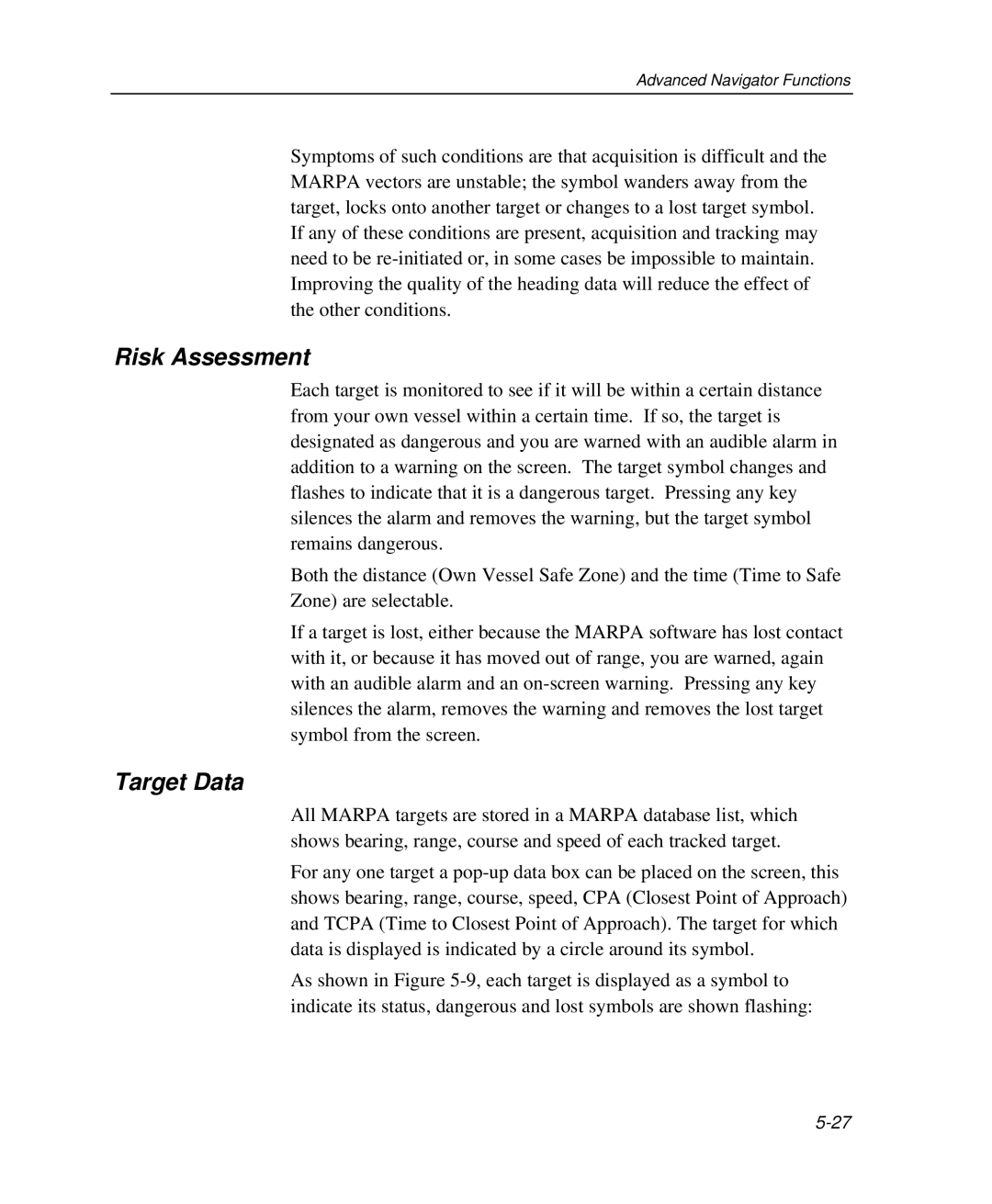Advanced Navigator Functions
Symptoms of such conditions are that acquisition is difficult and the MARPA vectors are unstable; the symbol wanders away from the target, locks onto another target or changes to a lost target symbol. If any of these conditions are present, acquisition and tracking may need to be
Risk Assessment
Each target is monitored to see if it will be within a certain distance from your own vessel within a certain time. If so, the target is designated as dangerous and you are warned with an audible alarm in addition to a warning on the screen. The target symbol changes and flashes to indicate that it is a dangerous target. Pressing any key silences the alarm and removes the warning, but the target symbol remains dangerous.
Both the distance (Own Vessel Safe Zone) and the time (Time to Safe
Zone) are selectable.
If a target is lost, either because the MARPA software has lost contact with it, or because it has moved out of range, you are warned, again with an audible alarm and an
Target Data
All MARPA targets are stored in a MARPA database list, which shows bearing, range, course and speed of each tracked target.
For any one target a
As shown in Figure
